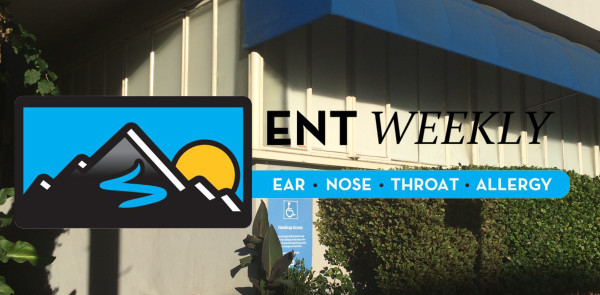Chronic nasal congestion? Sleep apnea or difficulty breathing at night? Headaches and sinus infections?
If you have all of these symptoms, you may have a deviated nasal septum!
The nasal septum is the wall that separates the nasal cavity into the two nostrils, made of cartilage and bone. Normally, the septum lies in a central, mid-line position, and thus the nasal passages are symmetrical. A deviated nasal septum is an abnormal condition in which the top of the cartilage leans to the right, the left, or both, causing obstruction of the affected nasal passage. Septal deviations are denoted in a 1-4 range, with one being mild and four being severe. In other words, if a doctor says that you have a 3+ deviation to the right, it means that your septum is pushed to the right side, making the nasal passage on the right narrowed and easier to get obstructed.
Before running off to your nearest otolaryngologist (ENT) to check your septum, it is important to note that having a deviated septum is not a major health concern. In fact, over 80% of the population has a deviated septum, and many would not know about it unless they were told by their physician. To see a deviated septum, a doctor needs to perform a Head-Eye-Ear-Nose-Throat (HEENT) exam in which a nasal speculum is inserted in the nose and a bright light is shined at the interior. For the most part, a deviated septum mainly presents as an annoyance with chronic nasal congestion, sinus pressure, and occasionally, is a contributing factor to other health issues such as chronic epistaxis or sleep apnea. Unless these symptoms annoy you enough, you can live a long life with a deviated septum.
Image Source: Thomas Barwick
That being said, if your stuffy nose or frequent sinus infections cause you grief year round, here are some options available to you. In mild septal deviations, symptoms can simply be treated with medications such as decongestants, antihistamines, and nasal steroid sprays such as Flonase, Nasonex, or Dymista. Such medications only temporarily relieve symptoms and do not correct the underlying deviation. To relieve symptoms, the medications shrink the nasal concha/turbinates, which are glandular tissues that line the nasal cavity. Allergies or other irritants cause these tissues to swell up, further obstructing nasal airways. Coupled with a deviated septum, this can lead to complete nasal congestion. Another option for reducing nasal turbinates is a coblation, an office procedure where a probe is placed in the turbinates and radio waves are emitted to shrink the membranes. The procedure is generally performed several times over the course of 6-7 weeks to relieve nasal congestion.
For moderate to severe deviations, septoplasty and submucosal turbinate reduction (SR/SMR) are the definitive measures for immediately improving nasal congestion. This is an outpatient surgery, often done in surgery centers, and lasts no more than 30 minutes. In the surgery, the deviated cartilage is cut out and surrounding nasal turbinate tissues are also trimmed down. Nasal splints are kept in the nostril for a week while the septum heals in a straight fashion. The primary risk is not the surgery itself, but rather the general anesthesia used, which may result in adverse reactions depending on previous health conditions. According to the American Academy of Otolaryngology, septoplasty is one of the most common outpatient surgeries, with over 100 performed each month. The benefit of doing the surgery is that once the splints are removed, there is instant gratification of open airways. This contrasts with medications, which need to be taken for extended periods of time, or coblation, which requires multiple visits over several weeks.
If you are interested in your nasal septum now, feel free to chat about it with your primary care doctor or get a referral to see an otolaryngologist near you!
Feature Image Source: Justin Chin










